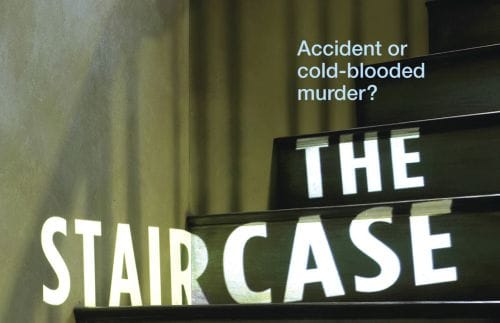
Netflix’s The Staircase is the binge worthy true crime series of summer 2018. The series follows Michael Patterson, a North Carolina man charged in connection to his wife’s death, during his 16-year long battle to prove his innocence in court. The Staircase has been the subject of a great deal of criticism and debate; however, it offers several important lessons about the criminal justice system in general.
This blog will make reference to material from all 13 episodes.
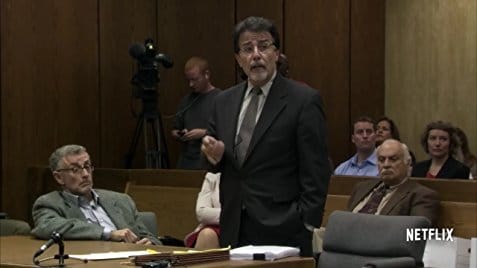
1. Trials can be extremely expensive.
In episode 2 of the Staircase series, Michael Peterson is shown sitting around a table with his defense team and brother, Bill. The crew is bouncing defense strategies off of one another and approving ideas with the two Peterson men. The defense team insists on tremendous expenses like $35,000-$45,000 for a survey to determine local views on homosexuality and bisexuality. Michael and Bill listen on with a noticeably overwhelmed expression on their faces. At the end of the scene, Michael Peterson says to the camera, “American justice is very, very expensive.”
In another impassioned soliloquy, Michael rants, “What do people do that don’t have any money? We know that the rich get off. Well, that’s the only reason the rich get off is because they can afford to defend themselves. The damn poor go to jail because they can’t afford to defend themselves. Period.”
Money and, more specifically, the astronomical cost of Michael Peterson’s defense was a central theme of the entire series. Staircase teaches us that although the rich can afford to defend themselves, neither the rich nor the poor can buy freedom.
An indigent man or woman accused of the same crime could obtain a public defender. That public defender will raise objections, file motions, and work just as diligently as a high-profile, expensive attorney like Rudolf. However, that public defender is certainly denied the luxuries of an attorney in Rudolf’s position.
While public defenders are granted some funds by the state for experts and testing, they do not have their own well-endowed piggy banks from which to indulge in what may be considered “frills” like computer-generated reconstruction animations by injury biomechanic experts.
Peterson’s wealth enabled his defense team to conduct multiple focus groups, enlist witness coaches a hire a slew of esteemed experts. Though no conclusive total for the cost of the trial is available, Michael and Bill do estimate $750-800,000 in episode 2.
In one sobering moment, Peterson looks at the camera and says, “Even when you have thousands of dollars and you have a smart lawyer, you have to get very lucky to get out. And it took 15 years.” Money does not always determine the level of representation that you are able to afford, but it does determine the quality of the case that you are able to present- and even that does not guarantee your freedom.

2. The trial/appellate process is often long and arduous.
- Kathleen Peterson dies on December 9, 2011.
- Michael Peterson surrenders to police after a grand jury indictment on January 14, 2002.
- Jury selection for Michael Peterson’s trial begins on May 5, 2003
- That jury comes back with a guilty verdict on October 10, 2003.
- The North Carolina Supreme Court rejects Peterson’s appeal on November 9, 2007.
- Duane Deaver is fired from the SBI on January 11, 2011.
- Rudolf files for retrial on February 15, 2011 and that motion is granted by Judge Hudson on December 14, 2011.
- Peterson enters an Alford plea on February 24, 2017.
At the time of his January 2002 indictment, Peterson was still a very wealthy man. For Peterson, payment for an $850,000 bond was feasible. Because he was able to pay that amount, Peterson was able to live at home with his family during the near 2 year period between the indictment and the verdict.
Many in America are denied the luxury of freedom while awaiting trial. On average, 4% of individuals charged with a crime are denied bail, 24% are granted a non-financial release, 38% are able to pay the bail amount set and are released, and a staggering 34% of individuals charged with a crime are detained due to their inability to post bail. In fact, over half of the average American jail is populated by men and women who have not yet been convicted of a crime.
In retrospect, some of the most powerful and chilling scenes of the series show Michael Peterson spending time with his family and sipping wine before receiving a life-altering verdict. Those scenes are far more profound when you remember that they also depict an experience denied to 34% of similarly situated Americans.
Peterson was incarcerated for eight years between the guilty verdict and the judge’s approval for a retrial in 2011. If those eight years were featured in the series, you would see a privileged man forced to face the same consequences as any man or woman convicted of a similar crime. The effects of his period of incarceration are apparent; Peterson looks as if he’s aged several decades during his relatively short stint in prison.
The appeals process is often stressful and drawn out. Successful appeals often end in retrial- meaning that even after a defendant has spent years waiting for the court to hear his or her argument, waiting for the judge to decide on its validity, and finally receiving the order that the court has decided in his or her favor, the defendant is back to the indictment phase of the process. Then, the defendant must wait years for the case to be resolved again- all for a resolution that is potentially another guilty verdict and another prison sentence.
This is not to say that the appeals process is not worth the hassle. Any violation of an individual’s constitutional rights ought to be addressed and remedied. It is, however, important to note that the road to rectify any possible miscarriages of justice may be long and tumultuous.
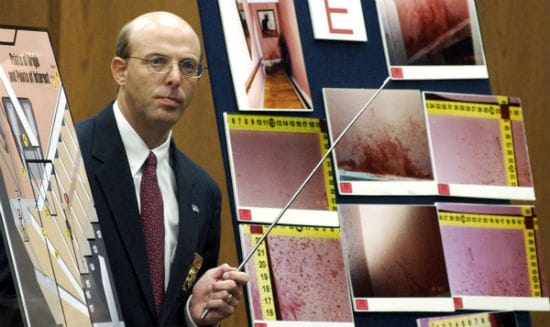
3. The CSI effect and the presumption of scientific validity are real, impactful phenomena
The CSI effect generally refers to the importance that modern juries place on forensic evidence in order to convict. This theory holds that because of television shows like CSI, juries are far less likely to issue a guilty verdict based only on circumstantial evidence and far more likely to convict when there is some forensic connection linking the defendant to the crime.
Television shows depict forensic science as fact and certainty. The images of fingerprints and DNA displayed on futuristic monitors match perfectly to the suspect’s profile. The men and women in the crime lab never make mistakes. There are no debates over the murder weapon or the cause of death. There is never concern about contamination or mention of an evidence log. There is no margin of error.
In real life, forensic science is not as absolute. Of the hundreds of exonerations since 1989, almost half have been the result of flawed forensic science. Technology is quickly evolving and the field is improving, but it is impossible to have complete certainty in a finding. The issue arises because judges, juries, and attorneys are not trained as scientists. The validity of these scientific findings are discussed and decided on by individuals who are not well-versed in the field.
According to the 2016 Presidential Science Council Report, “Expert witnesses have often overstated the probative value of their evidence, going far beyond what the relevant science can justify.” Because juries, judges, and attorneys are not scientists, they cannot accurately determine the scientific validity of expert witnesses’ findings. If the expert testimony is scientifically inaccurate- such as the case with Duane Deaver in Staircase– the opposing side can attempt to present alternative testimony. However, there is no way to ensure the jury believes one expert’s findings over another expert’s flawed report.
In Staircase, injury biomechanic expert Dr. Fanis Bandak explains that a medical examiner is not trained on causation. He goes on to say that a medical examiner can determine the cause of death but cannot determine how those injuries occurred. By establishing causation, the medical examiner overstated her findings and made a connection that was not supported by scientific fact. Because the judge and jurors were not trained scientists, they were forced to find which argument was more compelling- and, often, the more damning argument is found to be more compelling.
Juries have a reasonable expectation that the experts presented by the state begin as impartial investigators. We are conditioned to believe that the men and women employed by entities like the SBI begin their testing without any sort of expectation for the results. In theory, if the forensic scientists are provided with any context, they are meant to disassociate from that information and conduct an unbiased analysis of the evidence recovered.
Forensic scientists are susceptible to human error and, in practice, their analysis can be tainted by cognitive bias and expectations. Naturally, individuals in this position may subconsciously or consciously look for evidence that would validate the state’s position while disregarding any contradictory evidence.
For example, consider the expectations placed on the medical examiner’s autopsy of Elizabeth Ratliff, the woman who had died as a result of a fall down the stairs in Germany 16 years prior to Kathleen Peterson’s death. At the state’s request, Ratliff’s body was exhumed and transported from Texas to North Carolina for examination in an effort to prove that then-alleged killer Michael Peterson had accumulated multiple victims.
What would have happened to the state’s case if the medical examiner determined that Ratliff’s death was an accident? Would the medical examiner still have a job if she would have sided with the German examiner’s report- making it so that the exhumation and transportation of a long-time deceased woman’s body was completely unnecessary? While this may all be speculation, the fact is that the state’s medical examiner autopsy found- in direct opposition of the German examination done on the fully intact corpse- that Ratliff was beaten to death.
Making a Murderer, Fear of 13, The Central Park Five, and The Staircase have done a great deal to reverse the CSI effect. Appropriately applied, unbiased forensic testing is a vital tool both in the solving of crimes and the exoneration of the innocent; however, not all forensic science can be taken as absolute fact.
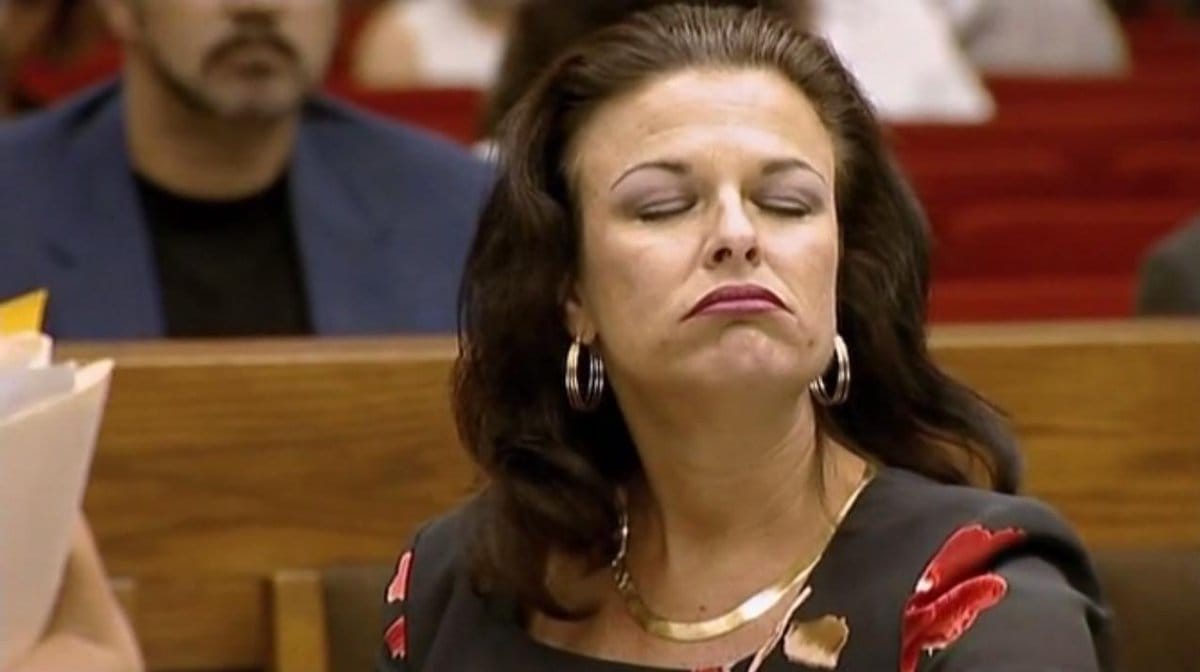
4. Secrets will be exposed, and information may be twisted.
To view The Staircase for the first time in 2018, the revelation of Michael Peterson’s bisexuality can be easily dismissible. We must remember that this series began filming in the early 2000’s before the repeal of Don’t Ask Don’t Tell and well before gay marriage was legalized. Though more accepted and less persecuted by American society at large than in previous eras, the LGBTQ+ community was still struggling to obtain basic constitutional rights. It was extremely unconventional to be an out, bisexual, married father.
Though the defense made a sincere effort to suppress evidence of Peterson’s bisexuality, the judge determined that the correspondence with Brad went to motive (though this evidence was later determined to be inadmissible by the NC Supreme Court due to a search warrant issue). In effect, Peterson’s sexual orientation was permitted to be exposed to the world and presented as explanation for the execution of an immoral act.
The prosecution outed Peterson to his children, his family, his community, and to the world. Bisexual men are among the least likely sub-groups to come out to their friends and families. A 2013 Pew Research Study found that only 28% of the bisexual people surveyed were out to those closest to them; of the bisexual people surveyed, only 27% were men. We can expect that, one decade before this survey was conducted; bisexual men were even less likely to come out to their families or friends. Michael Peterson was not given an option- in order to prove his innocence; he was forced to allow his sexual orientation to be discussed.
The Staircase showed the varied reactions to Peterson’s public outing- from the complete acceptance by his children, to the blatant homophobia by the prosecution, to the thinly veiled disapproval by Kathleen’s sisters. Alongside Peterson’s writings, military career, and personal tragedies, his interactions with other bi or gay men were highly scrutinized over the course of the investigation and subsequent trial.
At the conclusion of the series, Judge Hudson comments on the evidence of Peterson’s sexual correspondence with other men. He says in retrospect, he would not have allowed the evidence to come in as it was “unduly prejudicial to the defense”. The presentation of the emails and other material found at Peterson’s residence was not merely presented as motive, it was used as a weapon.
During closing arguments, then-Assistant District Attorney Freda Black waves a file folder full of gay pornography recovered from Peterson’s computer. Commenting on the testimony of Brad, the male escort, she says, “I don’t mean to offend anyone, but he did say they were going to have anal sex.” Slamming the folder down in front of the jury box, Black proceeds, “Filth. Pure filth.”
While the courts can regulate the admissibility of testimony and materials into evidence, there is little that a judge can do about the interpretation of such evidence. Taking into account the political climate in North Carolina in the early 2000’s, one cannot be sure whether or not such ideas would repeated in the privacy of the jury deliberation room if not for Black’s impassioned homophobic remarks. In sum, the interpretation of the evidence is frequently more important than the evidence itself.
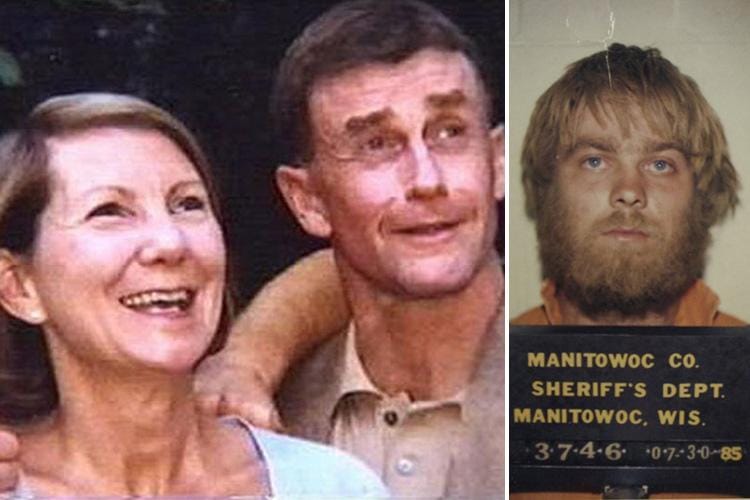
5. Miscarriages of justice do not always involve corruption.
When you think of wrongful conviction, you may think of cases like Steven Avery’s from Making a Murderer. This docuseries contended that Avery was framed for the murder of 25-year-old Teresa Halbach by the police and prosecution. The creators of the series argued that the police coached Brenden Dassey, Avery’s 16-year-old nephew with a well-below average IQ, into incriminating himself and his uncle; moved the victim’s car onto Avery’s property; and extracted Avery’s blood from a vial in evidence in order to plant his DNA in her vehicle.
If true, Making a Murderer documents one of the most horrendous corruption schemes and violations of a single individual’s rights in American history.
Miscarriages of justice do not always need to be this grandiose. When we hear that someone’s rights have been violated or that someone has been wrongfully convicted of a crime, we tend to think that this requires intent. We assume that “bad” things only happen in court when someone is out to get the defendant. This is simply untrue.
The Staircase shows that miscarriages of justice can just as easily spring from ignorance. A blood spatter expert exaggerated and mischaracterized his findings. The District Attorney was not trained as a blood spatter expert, and was not aware that Deaver was lying about his qualifications and analysis. The defense stipulated to Deaver’s qualifications as an expert witness. The judge allowed for this testimony to be presented under the assumption that Deaver would not fabricate his findings. In the end, it was this testimony that convinced a jury of Peterson’s guilt.
Deaver’s testimony was not the result of a scandal, or a scheme to imprison Michael Peterson for the death of his wife. Deaver’s testimony was the result of an ignorant man in a position that he was not qualified for, making reports that he was unfit to make, and acting in purely his own self-interest. In the majority of cases, this is all it takes to get a wrongful conviction.
There are plenty of instances where wrongful conviction is the result of malintent; however, many defendants are the victims of injustices that arise purely because of ignorance.
• • • • •
You may have spent your Independence Day debating with family and friends about Michael Peterson’s innocence or guilt. You may have your own theory about what happened to Kathleen Peterson, or even convinced yourself that the owl theory is valid. It is our hope, at the conclusion of this blog post, that you have learned a great deal about criminal procedure and the justice system in general.
If you or a loved one has been charged with a crime and is looking for devoted and convicted representation without a hefty price tag, call the attorneys at Rehmeyer & Allatt for a free consultation.
